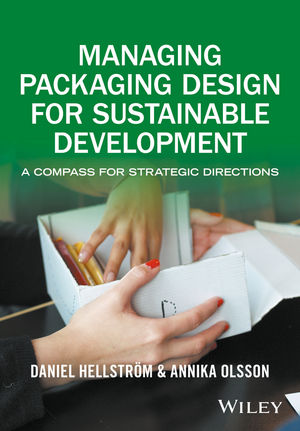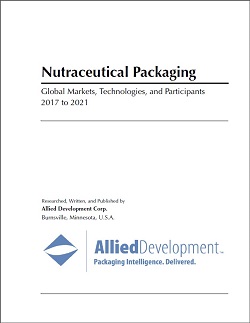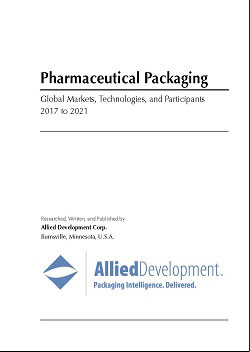The pandemic wreaked havoc on business development in 2021, and so many companies had to shift business objectives to meet the moment. Many sustainability research and development projects experienced delays, and many industry analysts downplayed the feasibility of 2025 mandates as the pandemic reminded consumers of hygiene, shelf life and convenience with many types of traditional packaging.
However, consumer surveys and research in 2020 also revealed that sustainable trends are still strong. An October 2020 report from McKinsey and Company, “The Sustainability in Packaging - Inside the Mind of US Consumers,” revealed “sustainability ranked relatively low as a buying criterion among end-use factors during 2020, but more than half of all U.S. consumers are highly concerned about the environmental impact of the packaging in general.”
The McKinsey report affirms that U.S. consumers, in general, are willing to pay more for green packaging and would also buy additional sustainably packaged products if more were available. And a 2020 survey from EcoFocus Trends reported 64% of millennials cited that “it’s worth paying more for eco-friendly products while 38% of boomers would pay more for sustainable packaging.”
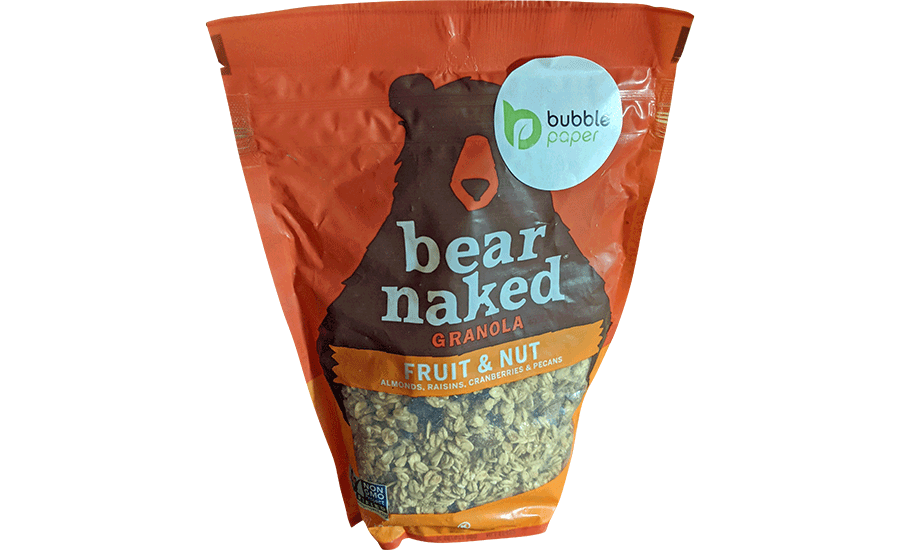
Image courtesy of Grant Gerke
Besides consumer surveys, sustainable packaging regulations in Europe kept coming in 2020 with more local regulations, and mono-layer film material is also leading the way to add more recycled content to the supply chain in the U.S.
The U.S-based Materials Recovery for the Future Program, led by The American Chemistry Council, had a mid-year report in 2020 from its pilot program on recycling flexible packaging: “The program shows within one year of installing FPP sortation equipment at the TotalRecycle MRF in Pennsylvania, four of the five sortation performance goals established for the pilot demonstration were achieved, and the program continues to progress toward achieving the fifth goal.”
VALUE CHAIN PARTNERS IN 2021
All this activity begs the question of how converters and contract packaging companies should approach 2021. According to the McKinsey report, “packaging converters should be proactive and collaborate with their value-chain partners sooner rather than later, adopting an experimental approach to delivering solutions and communicating narratives about them clearly.”
Many recent virtual conferences have demonstrated how value-chain partners are collaborating, be it extruders or consumer packaging goods (CPG) companies. At the virtual Pack Expo Connects conference in November 2020, Brian Stepowany, senior manager of packaging R&D at B&G Foods, was interviewed and discussed how the company is working with packaging film suppliers on new types of packaging materials.
“B&G Foods is looking at various opportunities with sustainable films and packaging components,” says Stepowany. “We’re evaluating two film suppliers and identifying where these companies are in their supply chain of mono-layer materials.”
B&G Foods in Parsippany, N.J., is a company with leading food brands like Green Giant, Clabber Girls and Weber, and Stepowany oversees Green Giant’s portfolio. Green Giant offers multiple frozen food products in multi-layer polyethylene (PET) bags that are can be cooked in the microwave.
According to Stepowany, film suppliers conducted mono-layer line trials in 2020 for Green Giant’s frozen food products. “The crucial element with testing is heating these pouches that can approach 200 degrees during cooking,” says Stepowany. “So there’s limitations on laminations and coatings that can be used to adhere these layers together so they can be recycled.” As stated at the conference, B&G Foods planned to resume its sustainable packaging R&D in full in 2021, according to Stepowany.
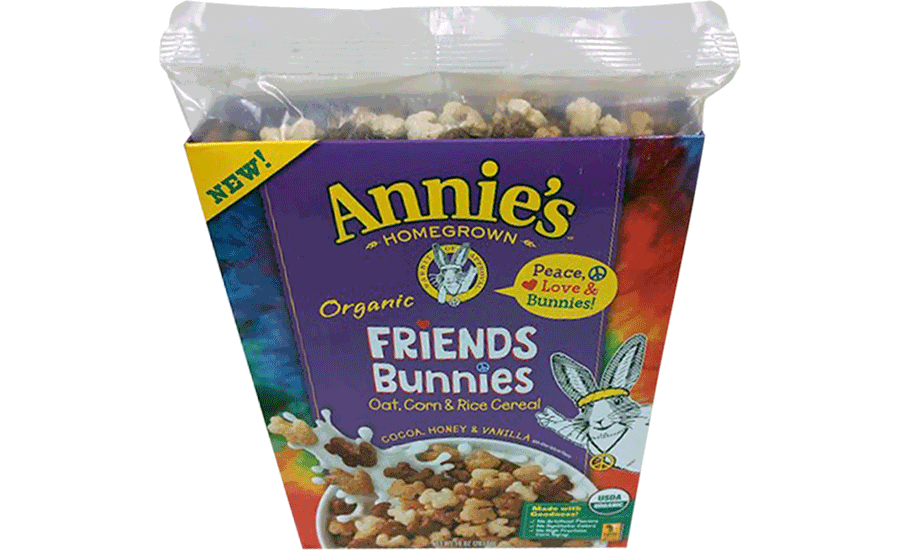
Image courtesy of Annie’s Homegrown
As B&G Foods and other companies move toward recycled material packaging, brands are educating consumers on the addition of more recycled material. Annie’s Homegrown and its Friends Cereal commercialized its post-consumer recycled (PCR) pouch liner in December 2018. With the new PCR packaging, Annie’s and its parent company General Mills wanted to promote the effort and used the back of the cereal box to do it in a creative way.
“We worked closely with our brand team on how to use that box to educate our consumers,” says Pat Keenan, R&D principal engineer at Annie’s Organic during the recent Pack Expo Connects. “You can see Bernie — the Bunny — on the back of the box with his friends sorting out the different types of recycling.”
A high-density polyethylene (HDPE) cereal liner is made from 35% recycled content via recycled milk and orange juice jugs. From there, recycling facilities clean the material, and then a blown film supplier produces HDPE into a cereal liner.
Recycled material and food contact is a relatively new horizon for food producers, and Annie’s Keenan says many brands weren’t interested in recycled content. Kennan cites sealing the film, clarity and possible imperfections as some of the concerns expressed in the supply chain.
“It’s a really important story to our supply chain,” says Kennan. “We really do want recycled content, and anything suppliers can do to make it available would be great.”
Film suppliers are also informing CPGs and converters on their sustainable research and developments. During the recent 2021 Food, Packaging and Sustainability Conference, Kathy Bolhous, CEO at Charter Next Generation, discussed PCR application trends and its GreenArrow line of films.
The company’s GreenArrow line of sustainable films debuted in 2016, and recently the company announced a new packaging introduction with Walmart in January 2021 featuring Kellogg’s Cocoa Krispies and a new 100% polyethylene flexible pouch.
“The outer film is made out of polyethylene, instead of polyester or polypropylene, and it’s laminated to an inner polyethylene film,” says Bolhous. “So we’re able to achieve the properties of polyester’s stiffness and clarity with this process.”
The company also supplied film for the Bear Naked Granola stand-up pouch that uses a surface printing application with a sealant film, and adds shelf life for the product. “If you take that package, you can see the graphics don’t pop and are a little more muted,” says Bolhaus. “That was the tradeoff; eliminate half the plastic but you’re able to achieve 100% recyclability.”
As the McKinsey report suggests, meeting company and industry sustainability targets will need collaboration between value-chain partners to create enough recycled content in the supply chain and, in 2021, it seems to be paying off so far.



